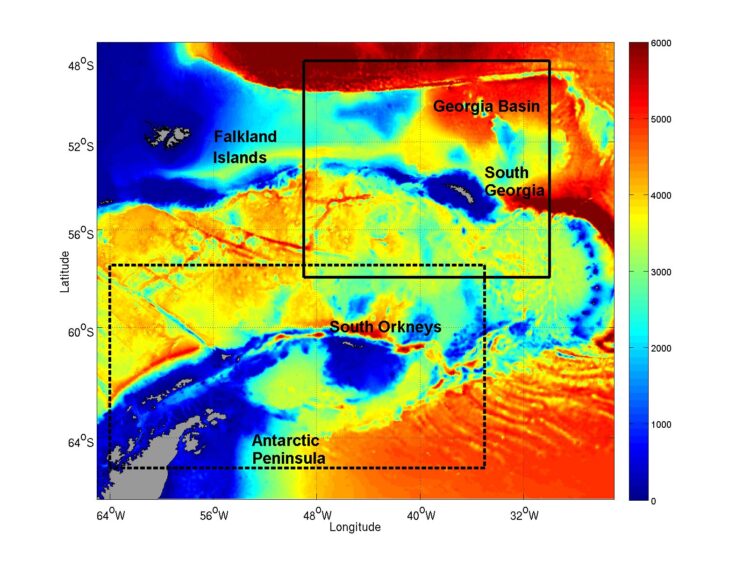Oceanographic models for the Scotia Sea
Developing high-resolution hydrodynamic models of the shelf regions around South Georgia and the South Orkney Islands
- Start date
- 1 July, 2015
- End date
- 30 June, 2025
This project involved the development of two regional models that are being used to examine the detailed oceanography of the South Georgia and South Orkney Islands shelves and surrounding regions. The models provide a numerical basis for detailed examination of the physical controls on the island ecosystems.
Background
The ecosystems associated with the ocean shelves around South Georgia and the South Orkney Islands support very large colonies of seabirds and seals. They also support substantial fisheries and are central to UK interests in the Southern Ocean. Many of the key processes that determine the operation of ecosystems in these island regions operate over small scales of <10 km.
To examine these small-scale processes, this project developed high resolution (~2.5 km) ocean models for the South Georgia and South Orkney Islands shelf regions. The underlying model system is NEMO (Nucleus for European Modelling of the Ocean: http://www.nemo-ocean.eu/), which has been widely adopted by the European scientific community for a range of modelling studies from regional to global scales. NEMO is a highly versatile modelling system, and includes a range of options for model parameterisation that enables good representation of regions characterised by complex bathymetry, precipitous shelf-edges and sea ice.
The models have been used to simulate a 20-year period, 1992-2012, with subsequent analysis of seasonal, inter-annual and longer-term variability. The models provide the basis for detailed analyses of the controls on the distribution and abundance of key species (including krill and fish) and their interactions with dependent predators. The models also provide a quantitative framework for developing science based spatial management procedures. The models are being linked to wider UK modelling efforts to allow examination of the impacts of climate driven change in Southern Ocean ecosystems. The output of the 20-year simulations is stored securely on the BAS computing systems; for more information please contact Dr Emma Young.
